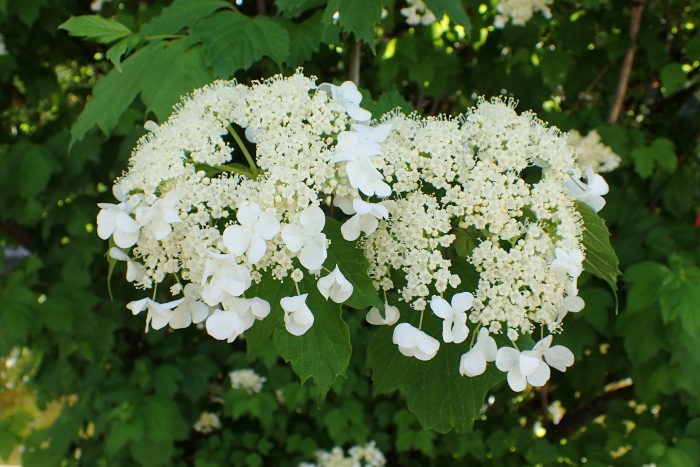Sargent Viburnum
(Viburnum sargentii)
Sargent Viburnum (Viburnum sargentii)
/
/

Krzysztof Ziarnek, Kenraiz
CC BY-SA 4.0
Image By:
Krzysztof Ziarnek, Kenraiz
Recorded By:
Copyright:
CC BY-SA 4.0
Copyright Notice:
Photo by: Krzysztof Ziarnek, Kenraiz | License Type: CC BY-SA 4.0 | License URL: https://creativecommons.org/licenses/by-sa/4.0 | Uploader: Kenraiz | Publisher: Wikimedia Commons | Title: Viburnum_sargentii_kz04.jpg | Notes: User created page with UploadWizard |























































Estimated Native Range
Summary
Viburnum sargentii, commonly known as Sargent Viburnum, is a deciduous shrub native to the mixed deciduous and coniferous forests of East Asia, including regions of China, Korea, and Japan. This species thrives in forest understories and along forest edges where it can receive dappled sunlight. It typically grows to 3 meters (10 feet) tall and wide, presenting a robust, multi-stemmed form. The leaves are 3-lobed and resemble those of a maple, with a notable red coloration in the fall. The shrub produces flat-topped clusters of white flowers in early summer, which are showy due to the larger, sterile florets that ring the perimeter of the cyme, while smaller, fertile flowers occupy the center. These flowers give way to red, berry-like drupes that are attractive to birds and other wildlife.
Sargent Viburnum is valued for its ornamental features, including its textured leaves, spring flowers, and autumn berries. It is often used in residential landscapes for border planting, as a specimen, or for naturalizing in woodland gardens. It adapts well to urban environments, tolerating a range of soil types, provided they have medium drainage. While it prefers full sun to part shade, it is relatively low maintenance and can be pruned to shape. The cultivar ’Onondaga’ is notable for its red central flowers and has received the Royal Horticultural Society’s Award of Garden Merit. Potential issues include susceptibility to viburnum leaf beetle and fungal diseases such as leaf spot.CC BY-SA 4.0
Sargent Viburnum is valued for its ornamental features, including its textured leaves, spring flowers, and autumn berries. It is often used in residential landscapes for border planting, as a specimen, or for naturalizing in woodland gardens. It adapts well to urban environments, tolerating a range of soil types, provided they have medium drainage. While it prefers full sun to part shade, it is relatively low maintenance and can be pruned to shape. The cultivar ’Onondaga’ is notable for its red central flowers and has received the Royal Horticultural Society’s Award of Garden Merit. Potential issues include susceptibility to viburnum leaf beetle and fungal diseases such as leaf spot.CC BY-SA 4.0
Plant Description
- Plant Type: Shrub
- Height: 12-15 feet
- Width: 12-15 feet
- Growth Rate: Moderate
- Flower Color: White
- Flowering Season: Spring
- Leaf Retention: Deciduous
Growth Requirements
- Sun: Full Sun, Part Shade
- Water: Medium
- Drainage: Medium
Common Uses
Bank Stabilization, Bee Garden, Bird Garden, Border Plant, Butterfly Garden, Deer Resistant, Fragrant, Hedges, Hummingbird Garden, Low Maintenance, Rabbit Resistant, Street Planting
Natural Habitat
Mixed deciduous and coniferous forests, forest understories, and edges
Other Names
Common Names:
Scientific Names: , Viburnum sargentii, Viburnum sterile, Viburnum opulus var. calvescens, Viburnum opulus var. sargentii, Viburnum opulus f. hydrangeoides, Viburnum opulus f. puberulum, Viburnum opulus subsp. calvescens, Viburnum opulus var. sterile, Viburnum sargentii var. calvescens
GBIF Accepted Name: Viburnum sargentii Koehne